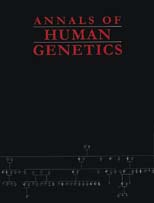No CrossRef data available.
Article contents
Segregation analysis of ovarian cancer using diathesis to include other cancers
Published online by Cambridge University Press: 01 May 1997
Abstract
Despite the recent cloning of BRCA1, BRCA2 and the mismatch repair genes, it will still be a long time before it is possible to specify any individual's risk for ovarian cancer based on her genotype. Most women concerned about their risk on the basis of one or two affected relatives do not belong to extensive ovarian cancer families. Risk calculations depend on a reliable genetic model for ovarian cancer derived, ideally, from the population from which an individual is drawn. We have carried out a segregation analysis using data collected from consecutive ovarian cancer patients in two different centres in the UK. Complex segregation analysis was carried out with the addition of diathesis as a separate parameter allowing other cancers, associated with ovarian cancer, to be taken into account. The use of diathesis in the derivation of this alternative model is described. Analysed under joint likelihood without diathesis, the gene frequency is 0·0028 and penetrance to age 70 years is 50%. This is in agreement with other published models. Incorporating diathesis into the model under joint likelihood gives similar parameters for a single locus model but gives the best fit with a two locus model where both genes are rare.
- Type
- Research Article
- Information
- Copyright
- © University College London 1997


